Cascade Components North Fork Brake Calipers & Cams
Blister’s Measured Weight:
- 124 g (single caliper, without pads)
MSRP:
- Calipers: $530 per pair, or $283 for single caliper
- Cams: $37 per pair
Bolted to: SCOR 4060 LT, Nicolai G1, Santa Cruz Hightower, Santa Cruz Nomad
Reviewer: 6’, 170 lbs / 183 cm, 77.1 kg
Test Locations: Washington, British Columbia
Test Duration: 9 months
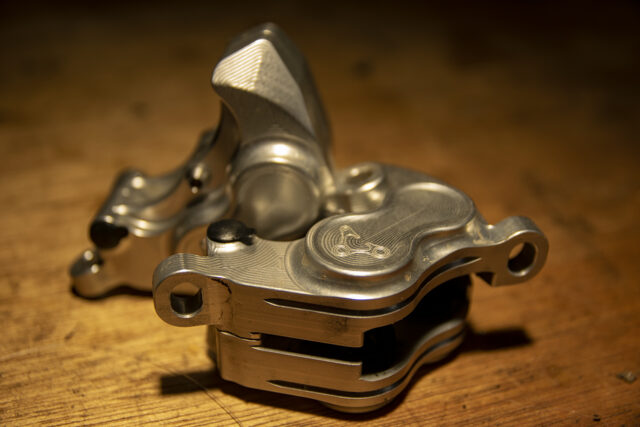
Intro
Cascade Components have a rapidly-growing catalog of parts meant to make bikes better suited to the steep, technical descents in their part of the Pacific Northwest, and one of their newer offerings is the North Fork brake caliper, which Cascade says increases the power of SRAM Code brakes by 20%. And the North Fork definitely makes for a big step up in power, but is more always better, or are there tradeoffs?
Design
Really understanding the benefit of the North Fork Calipers requires some knowledge of how hydraulic disc brakes work, so we’re going to start with that for some background info. If you don’t feel the need to go into the weeds and just want to know how these calipers perform on the trail, feel free to use the nav bar up top to skip ahead.
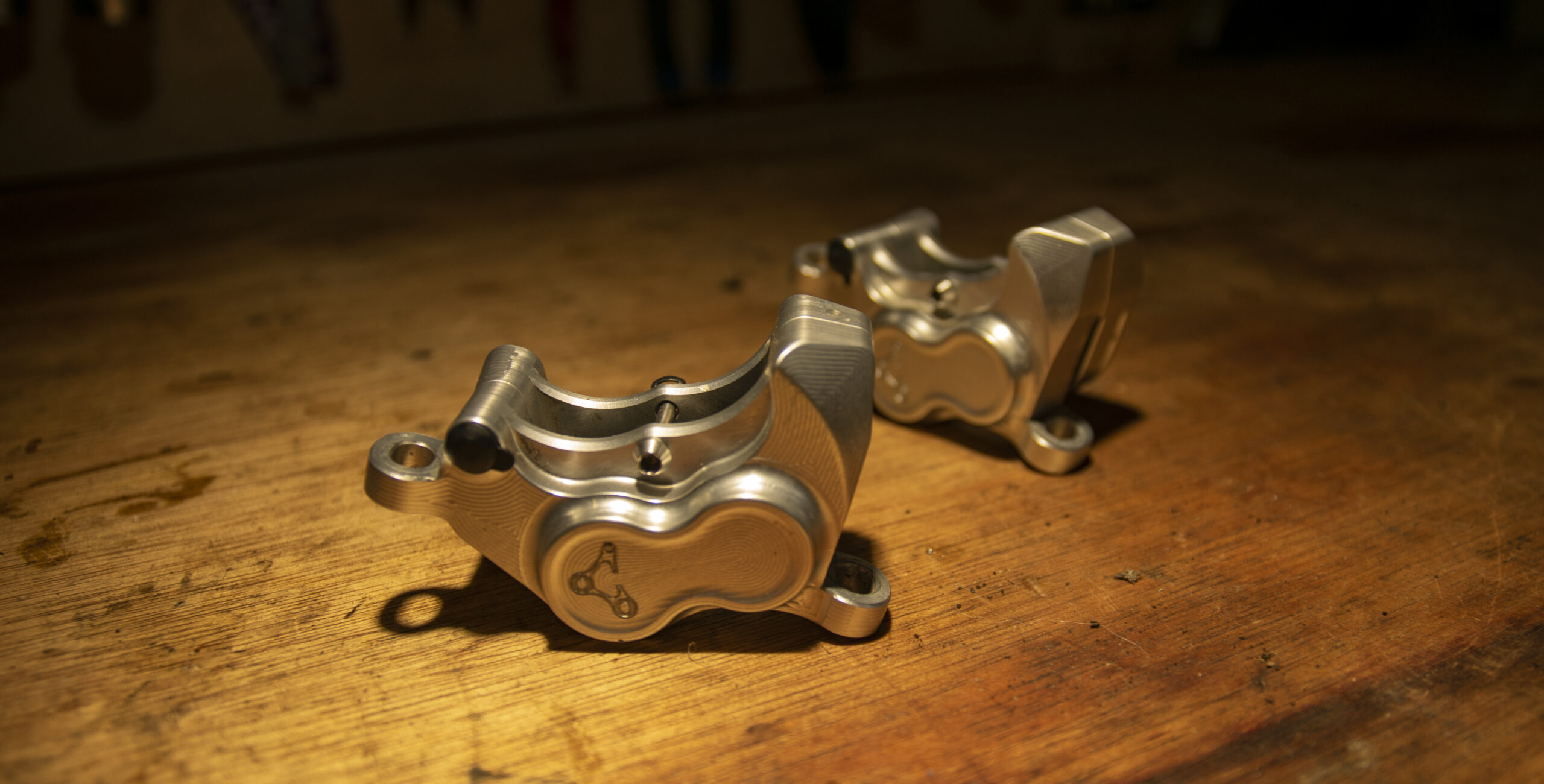
At least conceptually, hydraulic disc brakes are pretty simple. At the most basic level, they’re just a way of taking a force applied by your hand (squeezing the brake lever), multiplying it by a combination of mechanical and hydraulic leverage, and using it to squeeze a rotor. If you want more braking power (assuming the same brake pads and friction — we’ll come back to that later) you need to increase the amount of mechanical advantage one way or another. And there are a handful of ways to do that:
(1) Make the rotor bigger. A bigger rotor has more leverage over the wheel, and therefore more power.
(2) Make the wheel smaller — it’s the same thing as #1, but in reverse. A smaller wheel has less leverage over the rotor, and therefore the brakes have more power. But if you’re trying to upgrade the brakes on your current bike this one isn’t the most practical option, for obvious reasons.
(3) Add mechanical leverage by changing the lever design. The higher the ratio of lever stroke (at your finger) to the movement of the master cylinder piston (the part that pushes fluid down the line), the more leverage, and therefore the more power you have.
(4) Add hydraulic leverage by making the caliper pistons bigger and/or the master cylinder piston smaller. This is the same principle as #3 — the bigger the ratio of caliper piston area to master cylinder area you have, the greater the hydraulic leverage you have, and therefore the greater the power. Pretty straightforward.
Now, that’s not to say that designing a brake is easy — the details matter, a lot. Brakes need to work for an immense number of cycles, at a huge range of temperatures, and so on. And then there are a million other details to worry about. For example, getting the pistons to retract evenly and consistently is a tricky exercise in nailing the bore and seal geometry to get just the right rollback, to say nothing of all the details that go into the lever end, too. And while it’s easy, in theory, to make a brake immensely powerful, anything you do to increase either the mechanical or hydraulic leverage — points (3) and (4) above — is also going to make the lever throw longer and probably also mushier, with a less defined bite point.
That is, at least if you don’t change anything else to compensate. Cascade decided that they could increase the power of the Code by simply making a replacement caliper with significantly bigger pistons, but then make the pistons retract a shorter distance to maintain a very similar lever feel. Imagine what has to happen to push the pistons from their retracted position to engaging the brake — the lever needs to push a volume of brake fluid through the line that’s great enough to displace the pistons far enough to close the gap between the brake pads and the rotor. Bigger pistons mean more fluid displacement, and therefore longer lever throw — unless you reduce the distance that they have to move to compensate. And that’s exactly what Cascade has done. It does mean that there’s a smidge less clearance between the pads and the rotor (referred to as piston rollback), but I haven’t had any real trouble getting the calipers aligned and rub-free. It just takes a little extra care as compared to a stock Code caliper, but it’s still totally straightforward.
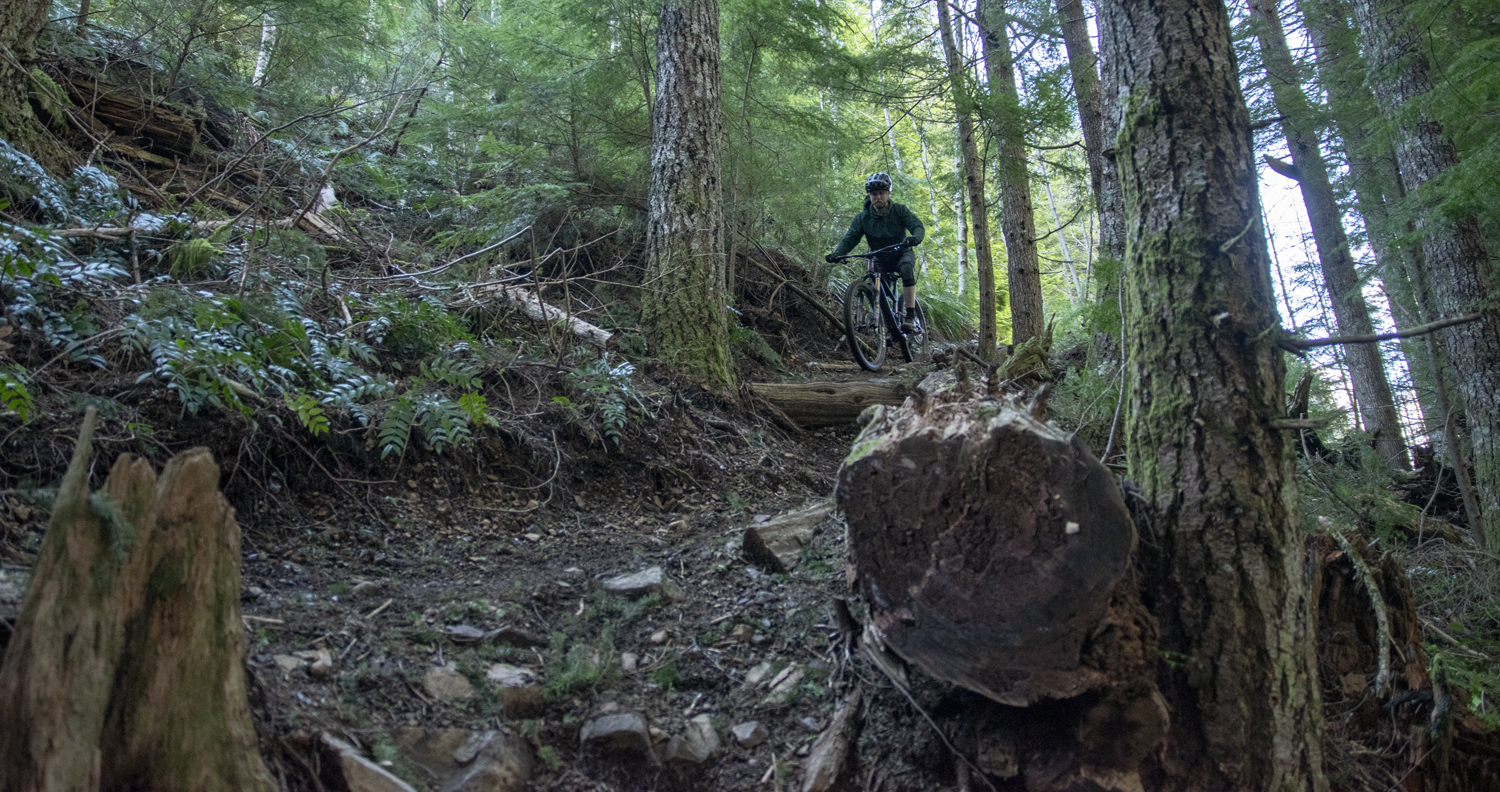
Cascade Components have also pulled a clever trick when it comes to replacement parts. A stock Code caliper has two 15 mm and two 16 mm diameter pistons; the North Fork moves the 16 mm ones to the smaller position, and then uses two 18 mm pistons — the same size used in SRAM’s two-piston road brakes — as the larger option. So if push comes to shove and you need spare pistons or caliper seals, there are stock SRAM parts that will work. And the North Fork calipers use standard Code pads, too — nothing proprietary or weird here.
As you’d expect from Cascade Components, the North Fork calipers are machined in their facility in Everett, Washington. They’re a two-piece, bolt-together affair, using titanium bolts to hold the two halves of the caliper together. And they’re available in your choice of black, silver, and purple. And despite their extra bulk — they’re visually significantly bigger than a stock Code caliper — the weight gain is completely negligible, at about 7 grams per caliper.
Since they use the same lever and pads as a stock Code, it’s pretty easy to theoretically validate Cascade Components’ claim of 20% extra power — the power is directly proportional to the area of the caliper pistons, and the North Fork’s are indeed 20% bigger. So far so good. Cascade is also experimenting with versions of the North Fork caliper for other brakes, but it remains to be seen which (if any) they’ll ultimately go forward with. The Code version is it for now.
Installation & Maintenance
The North Fork calipers ship fully assembled but dry, without any fluid. To install them you just need to remove the banjo fitting connecting the hose to the stock caliper, reassemble it onto the North Fork caliper, and bleed the system. Cascade took care to make the procedure as straightforward as possible, and the North Fork calipers use the same hose fittings as the stock caliper, and the same Bleeding Edge fitting for the bleed kit, too.
There’s one notable difference between bleeding the North Fork and a stock Code caliper, though — the optimal orientation for the caliper to remove any trapped air bubbles. The North Fork calipers are designed to orient all the internal passages with the cleanest routing to the bleed fitting when the caliper is held upright, with the mounting tabs vertical. Otherwise, the procedure is functionally identical to a stock Code brake (and quite easy). Cascade has more detailed instructions on their site if you’re interested.
The other detail of note is that the added bulk of the North Fork caliper means that they don’t work with every brake adapter out there, including the SRAM +20 mm ones that came on the SCOR 4060 LT that I first mounted the North Fork calipers on. Cascade supplied Galfer adapters in their place, which worked nicely. The installation instructions (linked above) include a compatibility guide as an appendix.
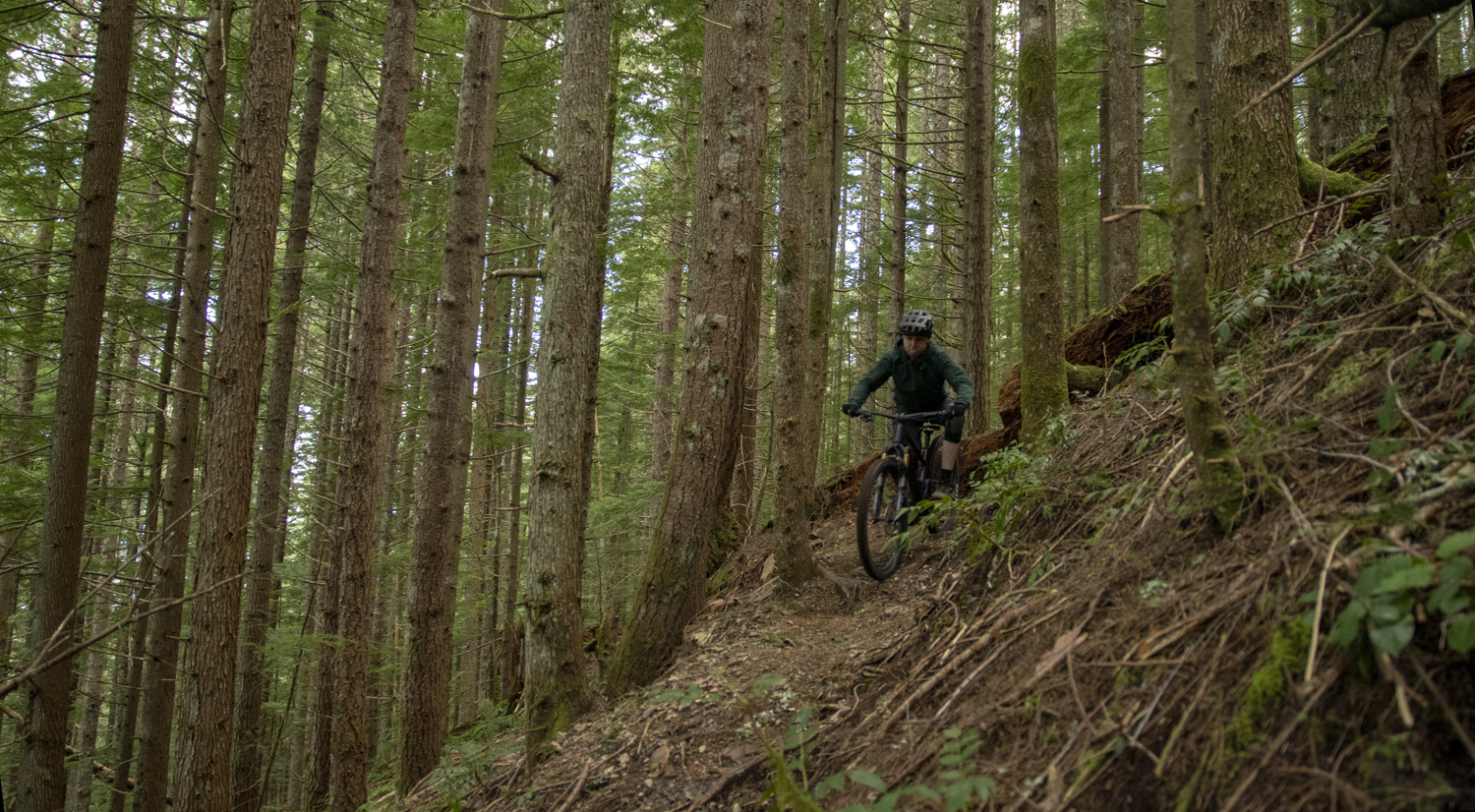
On the Trail
The North Fork calipers do indeed increase brake power by a big margin. My fingers aren’t well enough calibrated to confirm or deny Cascade’s claim of 20% more, but as we already covered, the math checks out on that, and it feels about right. It’s a big difference. And because Cascade has paired that bigger caliper piston area with a bit less piston rollback, the lever feel doesn’t change much, either — the total stroke is similar to a stock Code, and the power ramps up about the same. There’s just more of it.
Maybe that sounds anticlimactic, but eeking that much extra power out of a brake system while keeping the lever feel and stroke impressively consistent with the stock version, and maintaining enough piston rollback that getting the calipers aligned isn’t too hard, is a real balancing act and Cascade Components have done a nice job of walking that tightrope.
But is that worth shelling out $530? It depends. Certainly, there are much cheaper ways to increase your braking power — bigger rotors, first and foremost — and it’s definitely worth starting there before you spring for the North Fork upgrade. But bigger rotors do have their own downsides. They weigh more, can be more prone to rubbing since any misalignment is amplified over a greater distance, and as I covered in greater detail in my review of Galfer’s pads and rotors, too big rotors can make it hard to get your brakes up to optimal operating temperature, too.
A Minnesotan friend of mine is fond of saying “‘need’ is a funny word,” as a reminder against consumerist tendencies and the like. And she’s certainly right to do so in a whole lot of cases. But it’s pretty easy to flip that phrase on its head, and use it to make the exact opposite case when it comes to brake power. Even if your current brake setup is adequate, in the most literal sense — you can reliably slow down when you need to — more power can absolutely still help.
For one thing, more powerful brakes can really help with hand and forearm fatigue on long descents or big days in the bike park and the like. Even if you’re not ever braking any harder than you would with a lesser setup, if a more powerful brake lets you achieve that same stopping power with less effort on your end, that can really help keep you fresh for longer. And similarly, being able to brake harder in shorter bursts and let off the brakes in between can really help both stave off hand fatigue by giving you a break from braking, and help keep your brakes cooler by giving them a moment of downtime — even if you’re dumping more heat into them more abruptly when you get on them hard.
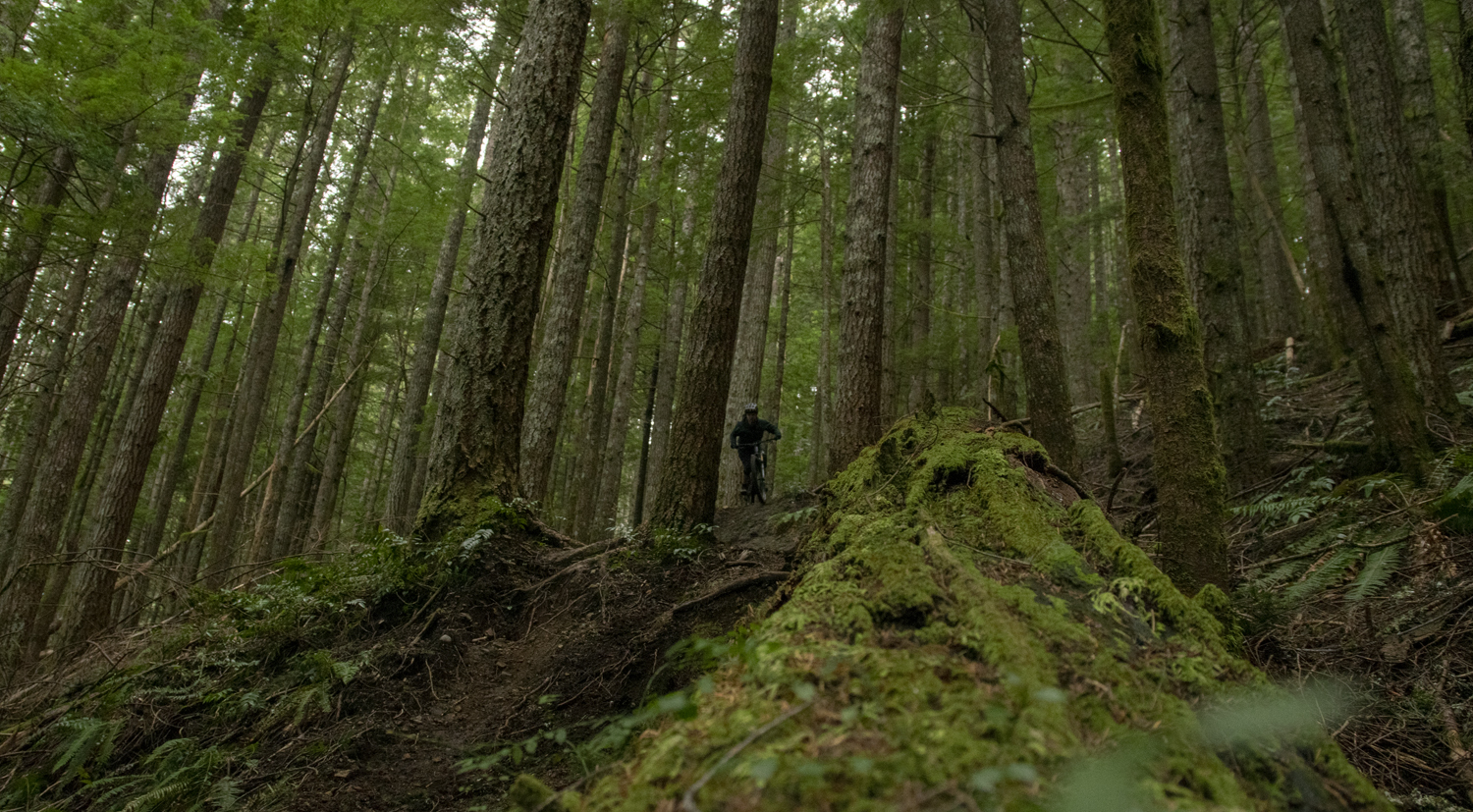
Cascade Components also makes an excellent observation on that point in their website copy for the North Fork calipers — in short, that more powerful brakes can actually make for fewer instances of locking up the wheels and over-braking, because it’s a lot easier to modulate a brake when you’re squeezing the levers with a more moderate effort, as opposed to hauling on them for all that you’re worth. And having experimented with a few brake upgrades recently, they’re absolutely right. I rarely need more power than stock Code RSCs with 200 mm rotors can offer in the absolute sense, but having more available does make it easier to control that power, simply because you’ve got better fine motor control when you’re not exerting as hard to squeeze the brake lever. And so, somewhat counterintuitively, adding brake power can actually help increase control in cases where you’re having to brake hard with limited traction, even if you won’t (or can’t, for traction reasons) use every drop of power that your brakes have on offer.
And if you want more brake power, especially if you want that extra power to come with relatively linear power delivery, the North Fork calipers really deliver. They’re not night-and-day more powerful than the very strongest DH brakes I’ve tried to date, namely Shimano Saints and Hayes Dominion A4s, but they’re a notch ahead of both. And those two brakes (especially the Saints) both feature comparatively abrupt bite points and more immediate power delivery, compared to the much more linear buildup you get from the Code / North Fork combo. To reiterate, they really do feel very similar to stock Codes, just with more power, and if you prefer that to the sharper initial bite of some of the other most powerful brakes out there, they’re especially worth a look.
I did find that I needed to re-bleed the rear brake after a handful of rides after the initial installation. I was a bit surprised to have a bleed issue crop up after a significant amount of ride time, instead of being obvious right away, but Cascade Components engineer Jimmy Davis says that’s actually pretty common. His theory is that small air bubbles sometimes get trapped around the caliper seals during the initial bleed since the calipers are starting completely empty, and sometimes take a little while to work themselves loose. Whatever the reason for that initial re-bleed (again, on the rear only), the North Fork calipers have been entirely solid and consistent since then.
Cascade Components also offers a replacement cam set for Code RSC levers to give a shorter stroke and firmer bite for riders who want that, but their take is that most folks won’t need it, and I didn’t ever feel like I needed less stroke than the stock cam offered. Those will run you $37 for a pair if you’re interested.
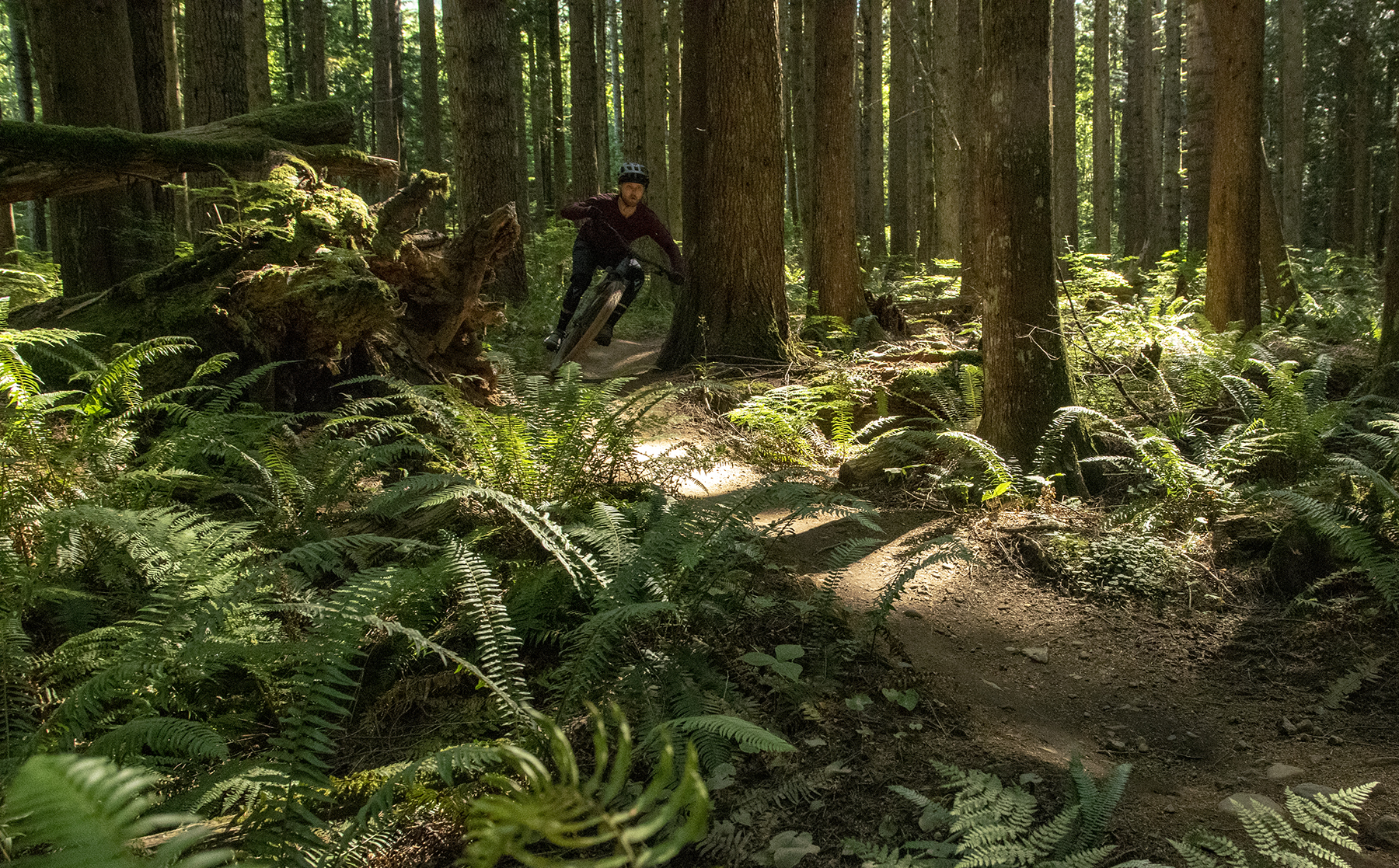
Update (11/25/2022): You asked, we listened. After we ran the review of the North Fork calipers, a bunch of folks wrote in to inquire about the aftermarket cams that Cascade Components offers for Code RSC levers (with or without the North Fork caliper upgrade) and now we’ve been trying those out, too.
In short, Cascade’s description of the North Fork Cams is spot on: they make the lever throw shorter and the bite point firmer. I’ve been trying the cams on Code RSC levers, both with and without the North Fork calipers, and the effect is the same in either scenario. The overall power doesn’t feel substantially different (for a given caliper; the North Fork calipers are still much more powerful than the stock ones). The North Fork Cams are all about changing lever feel.
It’s essentially a job requirement for me to be able to adapt to swapping back and forth between a whole bunch of different models of brakes, and while I’d love to be able to pick an option and exclusively run those, it’s not realistic as someone who’s testing bikes all the time. Maybe all that practice working with different-feeling brakes helped me out here, but I didn’t find the cams to make an especially drastic difference on-trail (unlike the calipers, which are dramatically more powerful than stock Codes).
That said, the cams do make a difference, and I think Cascade Components is generally right in how they think about who the cams will (and won’t) be ideally suited for. The more you tend to do your braking in short, hard bursts where you’re either braking very hard or not at all, the more appealing I think the North Fork Cams will be. They shorten the overall stroke of the brakes, and make the lever feel very firm and direct — it takes very little movement of the lever to be on the brakes, hard. Folks who find certain brakes to be harder to modulate than they’d like are likely to feel like the North Fork Cams are a step in the wrong direction. That hasn’t been my experience, personally, but I’m also much more in the “brake hard in shorter bursts” camp and tend to prefer massively strong brakes over easy-to-modulate ones for that reason.
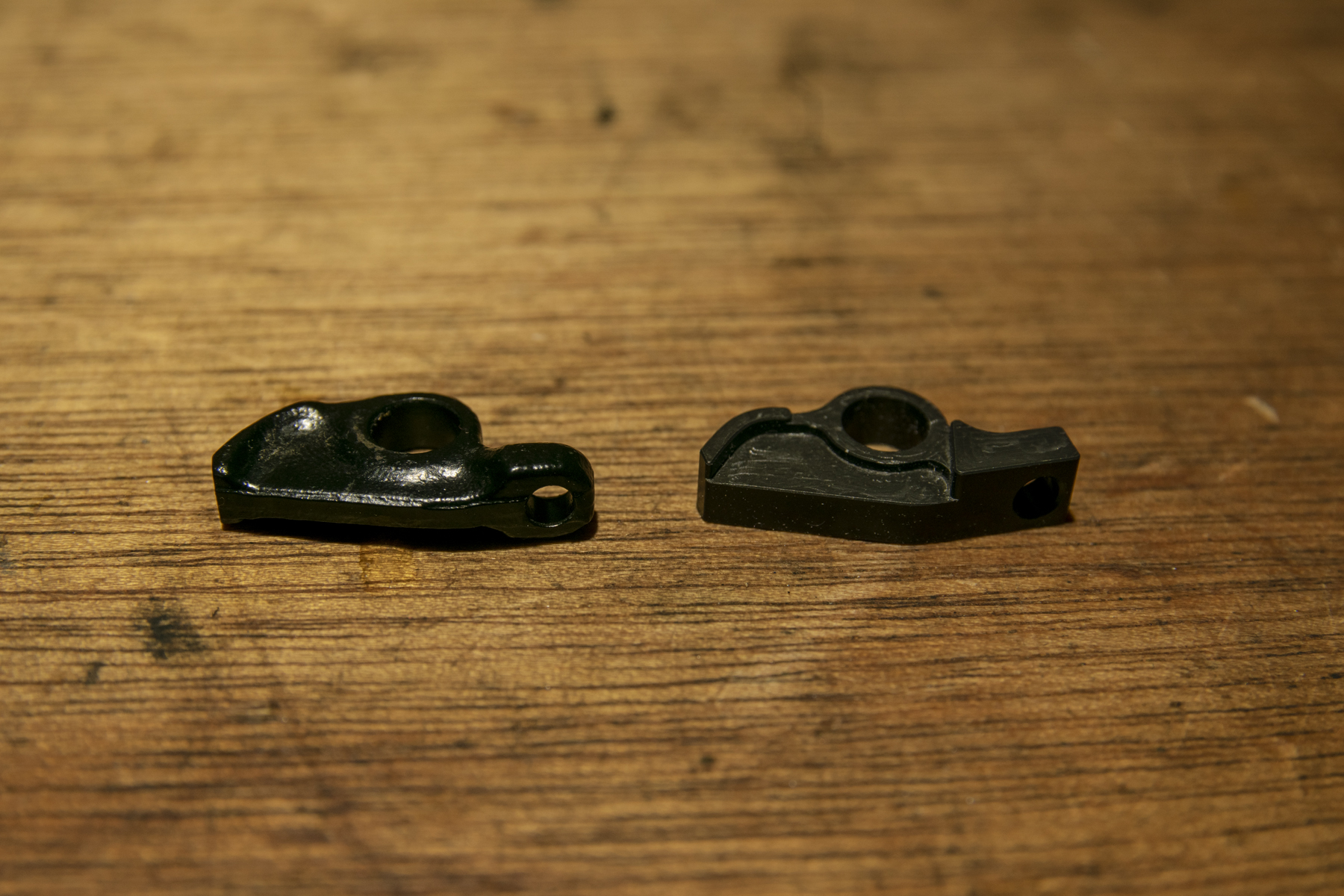
On the other hand, there are certain trails with extended steep sections where dragging the brakes is inevitable to some extent, and while I still haven’t had any trouble modulating either the stock Codes or North Fork Caliper-equipped ones in those scenarios, I do find there to be some truth to Cascade Components’ cautionary note that the North Fork Cams can make for a more fatiguing experience when doing more extended brake dragging. I personally do prefer the North Fork Cams when paired with their namesake calipers but find them to be less desirable with stock Code calipers because the lesser power of the stock calipers means that I wind up having to do more brake dragging in more situations than I do with the North Fork Caliper upgrade.
It’s also worth touching briefly on the installation process: for the most part, it’s quite straightforward, but you do need to press the lever pivot pin out (and then back in once you’ve swapped the cams). Cascade Compontents’ instructions are good and clear, but they suggest using an arbor press, which most folks probably don’t have handy. I was able to get the job done with a bench vice and a few assorted sockets to press into, but it did make the whole procedure a little trickier than it would have been with an arbor press. The clevis in the Code lever blade isn’t very stiff, and while you might be able to do the swap with some very careful hammering on a drift, I’d probably caution against it. A vice (at a minimum) is going to make the swap a lot easier.
Bottom Line
SRAM Code RSCs are good, reliable brakes, but they’re a bit off from some of the very strongest options out there in terms of raw power. Cascade Components’ North Fork calipers change that. Their claim of 20% extra power is readily believable, both because the math checks out, and because of their on-trail feel — it’s a huge step up. Whether you need (or “need”) that extra power is up to you — and it certainly doesn’t come cheap — but it will be a benefit for plenty of riders who spend a bunch of time in steep, fast terrain, due to the extra power in and of itself, but also the potential for increased control, reduced fatigue, and better heat management that it also affords. And they’re easy to install, use commonly available spare parts (including stock Code pads), and look cool to boot.

note that increasing the surface area of the pistons by 20% also reduces the piston travel by 20%, which means less tolerance for warped rotors or for clearing mud and debris. Not the biggest trade off, but something to be noted
Yep, and David did mention that in the review.
It would be nice if there was free lunch wouldn’t it?
Does the reduced piston rollback mean there’s less dead travel at the lever (lever throw before the pad first contacts the rotor), or did they dial it to basically just offset what would have been more dead travel due to the larger pistons?
It’s mostly just counteracting the bigger piston area. The total throw on the Cascade calipers is a little shorter, but not by a ton.
Buying a set of Code brakes plus these calipers results in a setup that both costs more, and weighs 100g / 20% more than a set of Trickstuff Direttissima brakes, and you’re still running nasty DOT fluid vs Mineral Oil? I’m scratching my head trying to think who’d accept these three major drawbacks when they could just get the best brakes on the market and be done with it?
I think somebody who is not willing to wait months to get the brakes.
why would you buy a set of code brakes when you can buy just the levers and hose? The set would be $350 + $530 vs $1100 give or take for the trickstuff, and you have a set of working brakes in a week. Don’t get me wrong, I’d love to give the extra $200 for a set of trickstuff, but hey aren’t even taking any more orders since their shop closed a few months ago… hopefully DT Swiss can fix their availability, but so far I got worse than it was before unfortunately.
The most likely person would be someone who’s complete bike came with Codes. They seem to be the most specced brake on complete bikes that I see, so that is not a trivial number of people.
In that case, you are comparing the price of Trickstuff completes to the Cascade Caliper only: pretty big price difference.
Would have loved to see a review of the lever cam set.
It’s not too late! I’ll talk to Cascade about it.
For the cam swap, is it safe to say it would make it feel similar to Saints?
It gets them closer than the stock cam, but not really. The initial free stroke is lighter on the Saints, and quite a bit longer. We’ll go into more detail in our upcoming brake shootout.
Can the replacement cams be used with a Code R brake lever?
Unfortunately not. The R levers don’t have the Swinglink cam (the “S” in “RSC”) so they’re no-go.